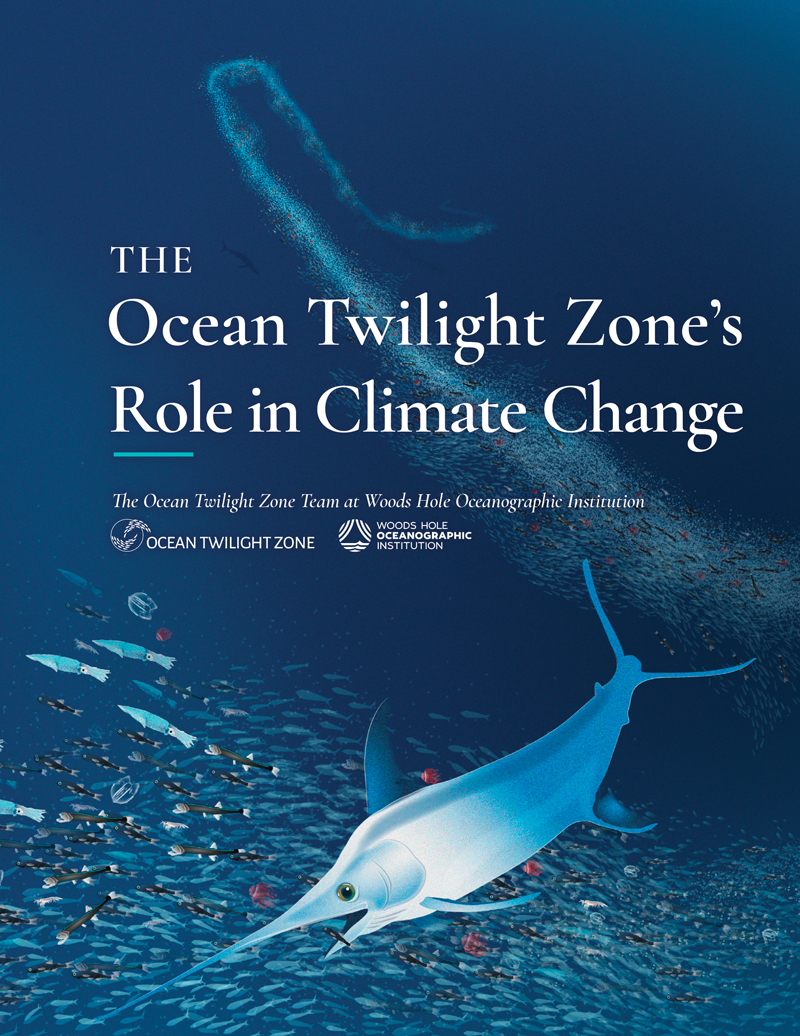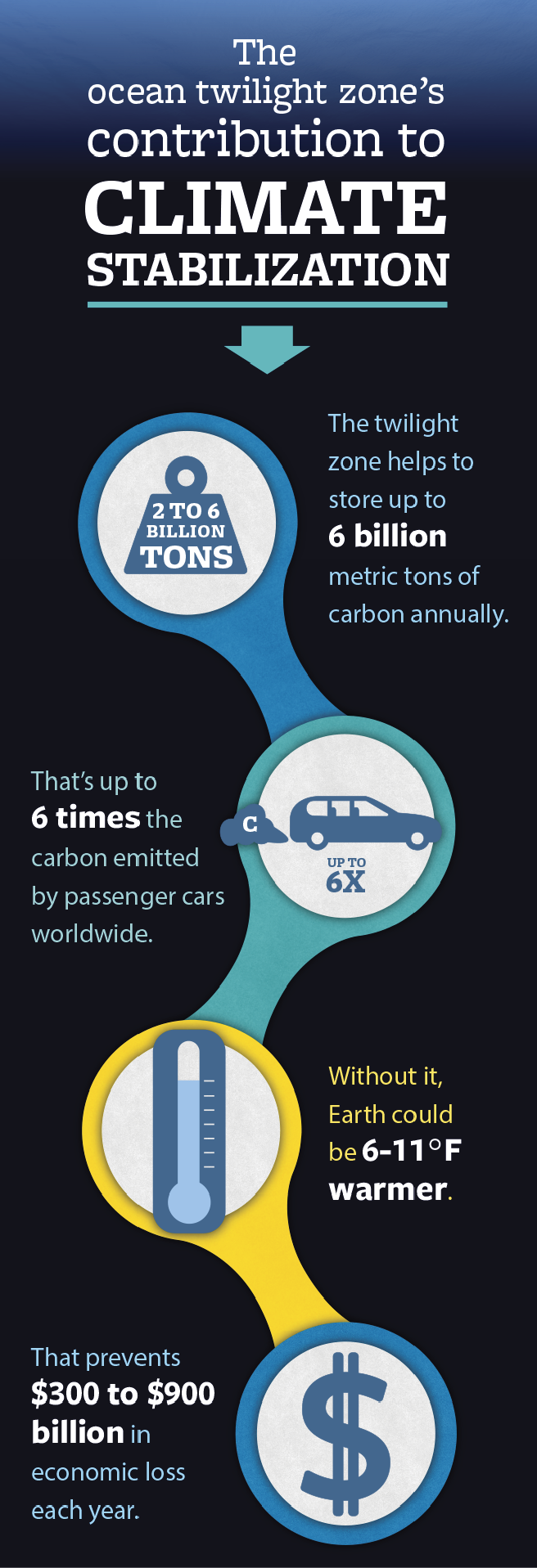Exclusive report
The Ocean Twilight Zone's Role in Climate Change
The WHOI Ocean Twilight Zone project team has recently produced a report which describes scientific knowledge that has been gained, highlights major questions that remain about the twilight zone’s role in carbon sequestration, and suggests new considerations and tools for decision makers that can shape future marine policy.
Exclusive report
The Ocean Twilight Zone's Role in Climate Change
The WHOI Ocean Twilight Zone project team has recently produced a report which describes scientific knowledge that has been gained, highlights major questions that remain about the twilight zone’s role in carbon sequestration, and suggests new considerations and tools for decision makers that can shape future marine policy.
The ocean’s mid-water, mesopelagic zone (also known as the ocean twilight zone) plays a fundamental role in global climate. Researchers at Woods Hole Oceanographic Institution (WHOI) have embarked on a multidisciplinary research initiative to help answer fundamental scientific questions and inform policy development. This mid-ocean realm encompasses about 20% of the global ocean volume and holds up to 95% of all fish in the ocean by weight. The twilight zone’s immense biomass and biodiversity plays a critical role in oceanic food webs and helps to regulate Earth’s climate by sequestering carbon in the deep ocean. Life in the ocean twilight zone helps to transport gigatonnes of carbon annually from the upper ocean into the deep sea, due in part to processes known as the biological carbon pump. However, the same natural resources that support climate stabilization services are exploitable. When resource demand drives profit, commercial harvesting of the vast biomass resources in deeper waters could become widespread. WHOI’s Ocean Twilight Zone project aims to produce the science needed for effective policy formulation. Our mission:
- Greatly expand scientific understanding of the twilight zone,
- Develop new low-cost, pervasive technologies to advance twilight zone exploration and understanding,
- Inform policymaking for the high seas, and
- Vastly raise public awareness of the ocean twilight zone.
The ocean’s mid-water, mesopelagic zone (also known as the ocean twilight zone) plays a fundamental role in global climate. Researchers at Woods Hole Oceanographic Institution (WHOI) have embarked on a multidisciplinary research initiative to help answer fundamental scientific questions and inform policy development. This mid-ocean realm encompasses about 20% of the global ocean volume and holds up to 95% of all fish in the ocean by weight. The twilight zone’s immense biomass and biodiversity plays a critical role in oceanic food webs and helps to regulate Earth’s climate by sequestering carbon in the deep ocean. Life in the ocean twilight zone helps to transport gigatonnes of carbon annually from the upper ocean into the deep sea, due in part to processes known as the biological carbon pump. However, the same natural resources that support climate stabilization services are exploitable. When resource demand drives profit, commercial harvesting of the vast biomass resources in deeper waters could become widespread. WHOI’s Ocean Twilight Zone project aims to produce the science needed for effective policy formulation. Our mission:
- Greatly expand scientific understanding of the twilight zone,
- Develop new low-cost, pervasive technologies to advance twilight zone exploration and understanding,
- Inform policymaking for the high seas, and
- Vastly raise public awareness of the ocean twilight zone.








